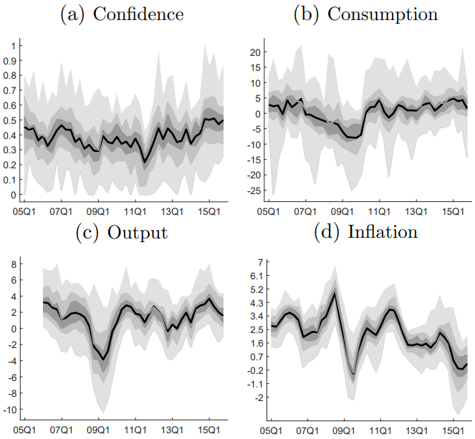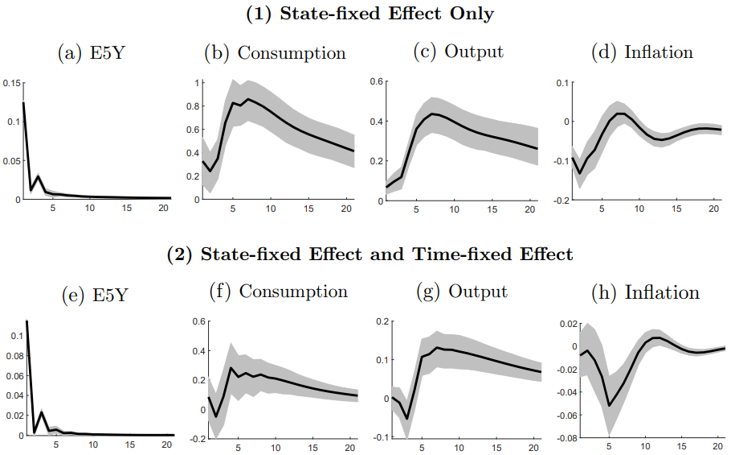References
Barsky, R. B. and E. Sims (2012). Information, animal spirits, and the meaning of innovations in consumer confidence. American Economic Review 102 (2), 1343–1377.
Barsky, R. B., S. Basu, and K. Lee (2015). Whither news shocks? NBER Macroeconomics Annual 29 (1), 225–264.
Blanchard, O. (1993). Consumption and the recession of 1990-1991. American Economic Review 83 (2), 270–274.
Case, K. E., J. M. Quigley, and R. J. Shiller (2005). Comparing wealth effects: the stock market versus the housing market. Advances in Macroeconomics 5 (1).
Choi, Sangyup, Jaehun Jeong, Dohyeon Park, and Donghoon Yoo. “News or animal spirits? Consumer confidence and economic activity: Redux.” Bank of Finland Research Discussion Paper 8 (2023).
Farmer, R. E. (2012). Confidence, crashes and animal spirits. Economic Journal 122 (559), 155–172.
Fève ve, P. and A. Guay (2019). Sentiments in svars. Economic Journal 129 (618), 877–896.
Hazell, J., J. Herreno, E. Nakamura, and J. Steinsson (2022). The slope of the Phillips curve: evidence from US states. Quarterly Journal of Economics 137 (3), 1299–1344.
Heathcote, J. and F. Perri (2018). Wealth and volatility. Review of Economic Studies 85 (4), 2173–2213.
Klein, M. and L. Linnemann (2021). Real exchange rate and international spillover effects of US technology shocks. Journal of International Economics 129, 103414
Lorenzoni, G. (2009). A theory of demand shocks. American Economic Review 99 (5), 2050–84.
Schmitt-Groh´e, S. and M. Uribe (2017). Liquidity traps and jobless recoveries. American Economic Journal: Macroeconomics 9 (1), 165–204.



